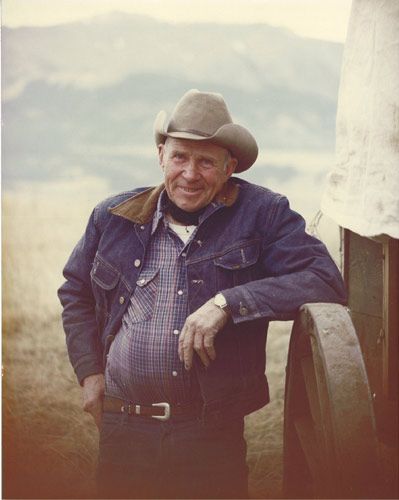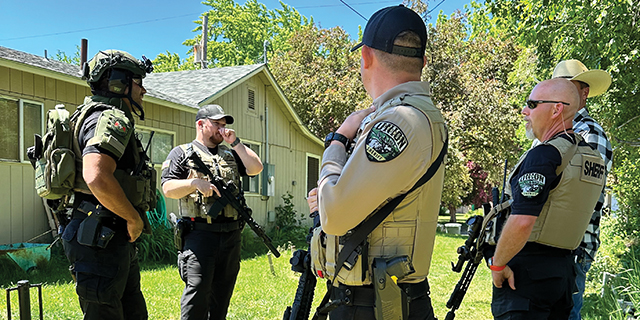Union Masonic Lodge part of rich heritage
Published 12:00 am Saturday, July 21, 2007

- DATING FROM 1898: The main hall of the Grande Ronde Valley Masonic Lodge includes furniture dating from its inception in 1898. (The Observer/Ethan Schowalter-Hay).
– Ethan Schowalter-Hay
UNION
The old building, a prominent component of Union’s Main Street skyline, displays on its face the universal symbol of the Freemasons: an overlapping square and compass, a reference to the fraternal organization’s ancestry in medieval European builders’ guilds.
The northeast cornerstone a fixture of all Masonic structures betrays the antiquity of Grande Ronde Valley Lodge No. 56. Construction on the building finished in 1898, 26 years after the local order was established.
The number in the lodge’s title refers to the order in which Oregon’s Masons halls were established. The first is Multnomah Lodge No.1 in Oregon City, built in 1846.
“The Grande Ronde Valley Lodge is the hub of [area] Masonry right now,” says member Ralph Patterson, noting that it involves more concordant bodies and aggregate organizations than other regional halls.
Ralph holds the coveted 33rd degree position of the Scottish Rite, one of the Masonic bodies; he was coronated in 1995. In addition, he retired just this year after 16 years as the personal representative of the Baker Valley Scottish Rite.
He also was a local postmaster and a Union County Man of the Year.
Ralph points to a similar cornerstone at the base of City Hall, and says, “These days they usually put the Grand Master’s name on the stone.”
The first floor of the lodge building now houses the post office; it is a tradition of Masonic halls to rent out the lower floor to a business. When the lodge was first established, the Townley-Gale Mercantile occupied the lower portion.
The funds from the lease go to the upkeep of the structure a major undertaking for such an old building.
The couches stuffed with horsehair in the main room are original, dating from the lodge’s construction. So are some of the chairs, the fireplace in the parlor and the light fixtures hanging over the dining area.
Three ornate chairs at the head of the main hall were donated by the Grande Ronde Valley Lodge to North Powder’s nascent hall in 1921. When this closed, the chairs went to Halfway’s order. In 2001, the Pine Valley lodge disbanded, and the chairs have completed their circuitous journey back to Union.
The Grande Ronde Valley Lodge helped sponsor both the North Powder and Cove halls in the late 19th and early 20th centuries.
Portraits of George Washington, one of the most well-known Masons, hang in several places.
“You always find his picture somewhere in a lodge,” Ralph notes.
Other notable Freemasons include a number of the other Founding Fathers, including Benjamin Franklin; Paul Revere, Wolfgang Amadeus Mozart, John Wayne and the Rev. Jesse Jackson, also were Masons.
Donna Patterson, Ralph’s wife and part of the appendant organization called the Order of the Eastern Star, says in many parts of the country, the development of a settlement is intertwined with the history of its lodge.
“[The Masons] were the businessmen, the ranchers,” she says. “They often established the town.”
Many of the Grande Ronde Valley’s earliest pioneers were Freemasons, and their portraits, with names long-established in the Union area, stare down upon one of the hallways.
William J. Dobbin was the first Master upon the order’s inception in 1872.
Another unique feature of the hall is a memorial window, built to honor a Baker City member named Benjamin Gardner Whitehouse who died in 1912. Ralph retrieved the monument several years ago and brought it to the Union lodge, where it hangs near the entrance. Donna says the creation of such windows, made of iron and glass, is a “lost art.”
While Freemasonry is popularly conceived of as a mysterious, impenetrable society, the Grande Ronde Valley Lodge frequently opens its doors and kitchen for fundraising breakfasts, and every year presents a Christmas pageant to which the public is invited.
Although the Union Masonic Lodge, supported by its post office lease, doesn’t face the same funding issues as some other historic buildings in town, it does share with them a rich heritage more than 100 years of community interaction, a cycle of first-floor businesses and a well-documented and engaging slice of Union’s history.
Donna thinks the structure itself serves a purpose.
“(People) have a need of being able to cling to some constants in our life even if it is only a building which we pass by each and every day of our life,” she said.





